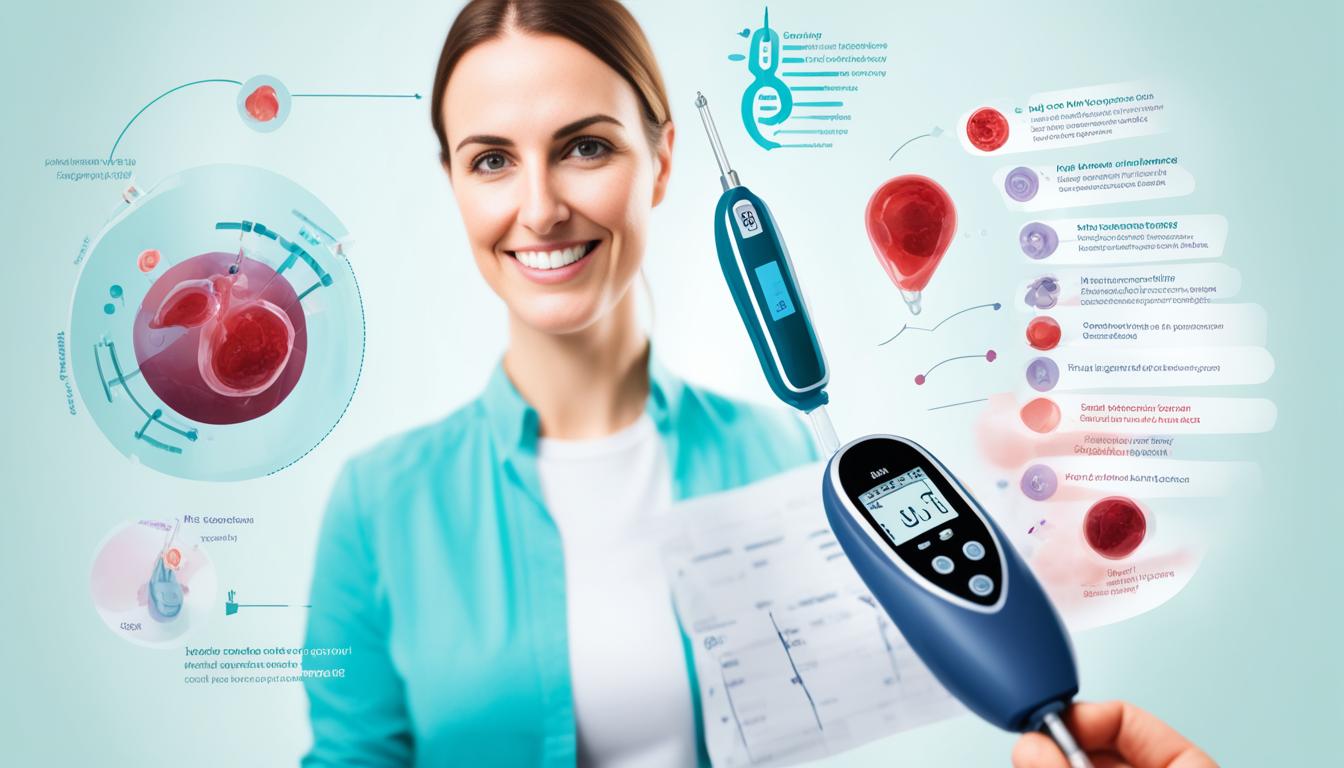Gestational diabetes happens during pregnancy when the body can’t handle glucose well. It leads to high blood sugar, which is risky for both mom and baby. Signs of this condition are feeling very thirsty, needing to pee a lot, tiredness, and losing weight without trying.
Doctors aren’t sure what causes gestational diabetes, but they think it has to do with pregnancy hormones messing with how the body uses insulin. Women are more likely to get it if they’re overweight, have family diabetes history, or are over 25.
To find out if a woman has gestational diabetes, she undergoes a glucose tolerance test. This test measures blood sugar levels after not eating for a while, then drinking something sweet. Treatment often involves lifestyle changes like eating a healthy diet, exercising, and keeping an eye on blood sugar. Sometimes, medicine or insulin shots help keep blood sugar under control.
Managing gestational diabetes well is crucial to avoid problems during pregnancy and lower the chance of type 2 diabetes later. Although researchers are exploring the use of stem cell therapy for this condition, we still need more trials to be sure it’s effective and safe.
Key Takeaways:
- Gestational diabetes is a condition that develops during pregnancy and is characterized by high blood sugar levels.
- Common symptoms of gestational diabetes include frequent urination, increased thirst, fatigue, and unexplained weight loss.
- Risk factors for gestational diabetes include being overweight, having a family history of diabetes, and being older than 25 years.
- Diagnosing gestational diabetes involves glucose tolerance testing.
- Managing gestational diabetes usually involves lifestyle changes, medication, or insulin injections.
Gestational Diabetes Treatment, Diet, and Complications
The treatment for gestational diabetes is all about keeping blood sugar levels in check. This is to have a healthy pregnancy and avoid risks. The starting point is a change in diet. A registered dietitian will make a meal plan with fewer carbs. They will also watch the food portion size and focus on healthy options.
Doing regular exercise is also key. Things like walking or swimming can bring down blood sugar levels. Plus, it’s great for your health overall.
Sometimes, using medicine or having insulin shots might be needed. These steps are taken if changing what you eat and exercising doesn’t work enough.
Keeping an eye on your blood sugar is a big part of handling gestational diabetes. You will need to test your blood sugar often with a finger prick. This tells you if your food and exercise plan is working to control your blood sugar.
Most women can get their blood sugar under control with the right care. They can have a healthy baby. But if you don’t treat or manage your gestational diabetes well, there can be problems.
Some issues that might happen are larger babies, being born too early, or low blood sugar in babies. There’s also a higher chance of getting type 2 diabetes for both mom and baby later on.
It’s crucial to go to all your prenatal doctor visits. You should also work closely with your healthcare team. This helps prevent problems and makes sure you and your baby stay as healthy as possible.
Stem Cell Therapy for Gestational Diabetes: Potential and Challenges
Stem cell therapy is showing promise in treating gestational diabetes. There are challenges that need to be dealt with, though. Research in this field is just starting.
Focus is on using mesenchymal stem cells (MSCs). These cells offer a chance to boost insulin production. They also could help with the inflammation linked to gestational diabetes.
The safety and benefits of MSC therapy require more study. It’s important to fully understand the risks and advantages before using stem cell therapy. This includes how we get and use the stem cells, and checking the results for a long time.
Also, there is a need to think about ethics and rules. These are key as we look into and use stem cell therapy. Still, everyone is hopeful for its future in treating gestational diabetes. We need more research and trials to learn more about using stem cells for this issue.

